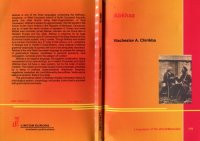
Ebook: Abkhaz
Author: Viacheslav A. Chirikba
- Genre: Linguistics // Foreign
- Tags: Языки и языкознание, Абхазо-адыгские языки, Абхазский язык
- Series: Languages of the World/Materials 119
- Year: 2003
- Publisher: LINCOM
- Language: English
- pdf
Abkhaz is one of the three languages comprising the Abkhazo-Adyghean, or West Caucasian branch of North Caucasian linguistic family (the other branch being Nakh-Daghestanian, or East Caucasian). Abkhaz is spoken by approximately 100,000 people in the former Soviet union (mainly in the Republic of Abkhazia, Caucasus), and by at least the same number of speakers in Turkey and some Middle east countries (small Abkhaz colonies can be found also in Western Europe and the USA). Abkhaz is notorious for its huge consonantal inventory (up to 67 consonants in its Bzyp dialect) and by its minimal vocalic system: only two vowels. Though Abkhaz was studied by a number of scholars (among whom P. Uslar in XIX century, or more easily K. Lomtatidze in Georgia and G. Hewitt in Great Britain), many aspects of Abkhaz grammar (especially its syntax) still have to be adequately described. Abkhaz is the only West Caucasian language to possess the category of grammatical classes, manifested in personal pronouns, verb conjugation, numerals and in category of number. Abkhaz is an ergative language, the ergative construction being represented not by case endings, as in related Circassian and Ubykh (Abkhaz does not have the case system), but by order of actant markers. The verbal root consists usually of one consonant, preceded by a string of prefixes (class-personal, directional, temporal, negational, causative, etc.) and followed by few suffixes. Verbs can be stative or dynamic, finite or non-finite. The grammatical sketch of Abkhaz includes information about its phonological system, morphology, and syntax. A short text is provided with grammatical comments.
Download the book Abkhaz for free or read online
Continue reading on any device:

Last viewed books
Related books
{related-news}
Comments (0)